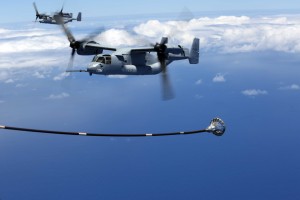2015-05-23 By Robbin Laird
During my visit to 2nd Marine Expeditionary Brigade on March 17, 2015, I had a chance to interview Major General Richard L. Simcock II, Commanding General, 2d MEB, and Major Marcus Mainz, lead 2d MEB planner for Exercise Bold Alligator 2014, where we had a lengthy discussion regarding the Marine Corps’ innovative approach in addressing Combatant Commanders’ requirements.
I was able to talk as well with Major Andrew O’Derell, the MEB Air Officer.
In this role, he functions as the glue between the CG and the Air Combat Element, to right size the force against the missions set by the CG.
“My job is to make sure the intent of the CG is met. If a MAGTF for aviation assets to accomplish their mission, they’ll propose recommended sourcing solutions from the other MAGTF air assets.
We are kind of the vetting function, if you will. We make sure that their sourcing solution isn’t jeopardizing another MAGTFs missions that the MEB commander has assigned them, and will prioritize.”
And given the special focus of 2nd MEB on shaping innovative C2 solutions, the Air Officer is involved in the mix and match approach of ensuring that ACE elements match up to the other combat elements to meet the Commander’s intent.
This obviously can get complicated as air assets operate off of ships or land, and mixing and matching can challenge the limits of C2.
For example, during Bold Alligator 2014, “the Kearsarge was the lead C2 element for aviation.
We can only positive control as far as the radars would allow, and when we get closer to shore, those radars are degrading.”
We discussed the impact of the Osprey upon how the Marines can operate and the challenges which the shift to the Osprey has brought as well.
Major O’Derell noted that he was involved in the 2003 insertion from Souda Bay in Crete into Northern Iraq (“1000 Marines over 1000 miles”) but this required airlift to 5,000 foot airstrips.
“Now with the Osprey we can do the same thing but the MEU does not have to offload at airstrips and we can do it with a vertical insertion and extraction method.”

The limit is kit and fuel, which can accompany the inserition force, but reinforcements of both would come via other means, such as the CH-53C or the KC-130J on airstrips.
The Osprey has also put high demand on the refueling fleet as well.
Prior to the coming of the Osprey, the Harriers and F-18s were the main demand element for aerial refueling, along with CH-53s and Prowlers.
“We’ve got this huge demand for Osprey aerial refueling and we don’t have enough tankers to give them gas for all the stuff they want to do. We’re hopefully kind of cracking the code. We’ve got interim clearance to give gas on the KC-10s, so now the Ospreys can take gas on the KC-10s.”
He highlighted that in the Judicious Response exercise, “I requested KC-10s early in the exercise planning.
Now we’ve got KC-10s that can potentially dual role as getting fuel to our attack platforms and to our Osprey platforms.
I don’t know that that’s been done recently or if it’s been done before, even in simulation exercises but.
We’re trying that out to see how it works and see what the bugs are.”
Clearly, the new Airbus tankers can also come to play the role as it is doing with many allied aircraft in Iraq and Syria and with the Aussies and Singapore are buying upwards of 13 Airbus tankers (the Aussies already have five), they can play a role tanking Ospreys as well.
One of the challenges will be to align the altitude at which the Ospreys need to refuel with the operational envelope of the KC-10 and KC-30As.
This is a work in progress.

